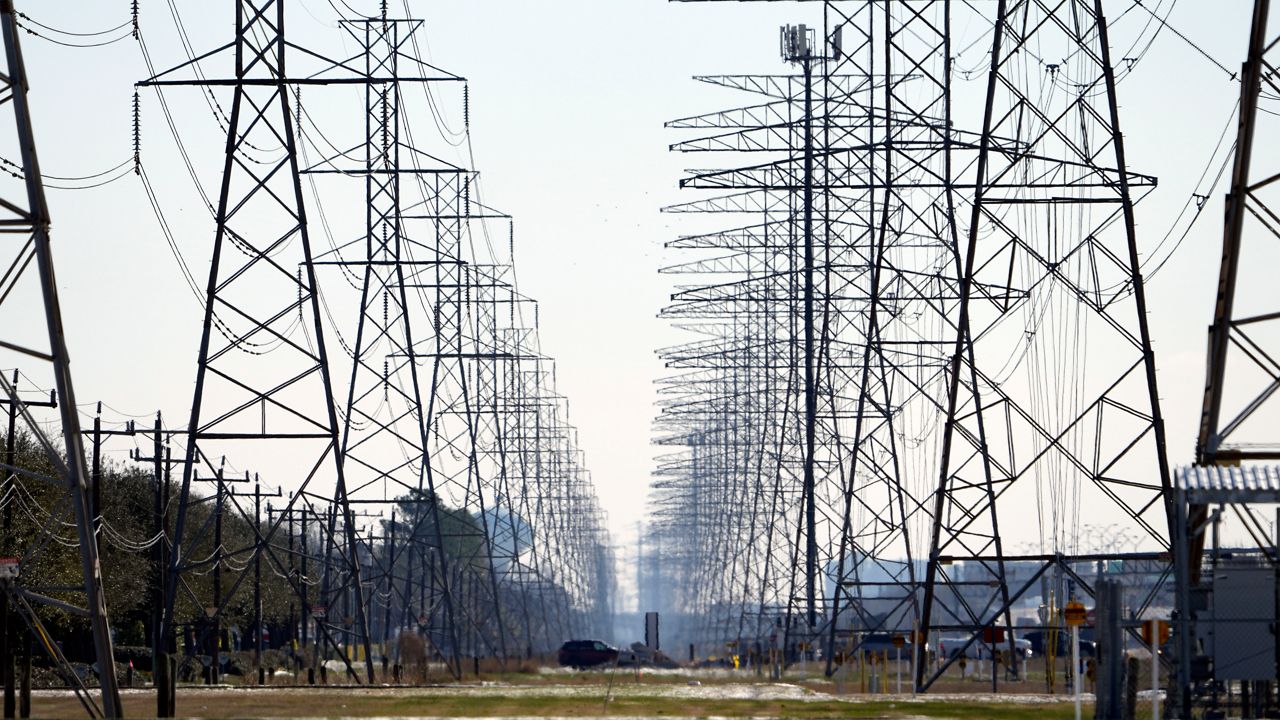The demand for electricity in Texas — an estimated 77,177 Megawatts at 3 p.m. — continues to climb as the Lone Star State faces one more triple-digit day in a string of triple-digit days.
The Electric Reliability Council of Texas, or ERCOT, has projected a record-setting peak demand of 79,671 Megawatts on Monday. A rolling update from ERCOT on its operating reserves — sitting at 3,700 Megawatts at 3 p.m. — has pushed the state into “requested energy conservation” status.
That doesn’t mean a failure of the grid is imminent. Voluntary energy conservation is a tool, like many other tools ERCOT will use to minimize usage: the daily purchase of ancillary services; the creation of a $50 million Emergency Response Service program; and typical market forces, such as higher energy prices, that are expected to push down usage.
The first hedge against demand is ancillary services. Each day, ERCOT projects expected energy needs, measured against the available providers in the marketplace. Monday, for instance, is very hot, with less-than-optimal energy production from the wind sector.
“ERCOT will buy several thousand megawatts of back-up reserves every day, and it’s meant to cover things that are unexpected or extreme compared to normal conditions,” said Attorney Katie Coleman, general counsel to the Texas Association of Manufacturers. “They have these tools on hand — these ancillary services — that they can deploy, if necessary.”
Sometimes, it means adding to supply, like putting additional generators on the grid. In other cases, it’s decreasing demand from large-scale users. And, as might be expected, it’s the large-scale energy users —such as manufacturing — that provide the biggest bang for the buck.
ERCOT literally will pay to add to supply or decrease demand. These multiple programs all fall under the label “ancillary services.” One of the most effective programs is Responsive Reserve, which kicks in almost immediately in the case of a major grid event.
“We provide about half of Responsive Reserve,” Coleman said of manufacturers. “If ERCOT gets into a situation where they need more Megawatts — and they ask us — they can basically hit a switch and turn us off or down. And that’s something they buy every day.”
Ancillary service is bought, but it may or may not be used on a daily basis. It’s a lot like insurance, Coleman said. And, yes, it is a cost that is passed on to the ratepayer.
“The way I like to describe it to people who don’t deal with the market every day is that it’s basically like there’s a basketball game going on, and these are the guys on the bench,” Coleman said of ancillary services. “So, if somebody gets injured — or something happens during the game — we’ve got back-up players, right?”
Ancillary services have existed as long as the grid has existed. But is ERCOT putting more reserves aside, after Winter Storm Uri? Yes, if for no other reason than to give the public more confidence that the grid is prepared for high demand, Coleman said.
“I think, after Uri, the public, you know, faced a lot of PTSD, for lack of a better word,” Coleman said, referring to post-traumatic stress disorder. “The decision was made that it made sense, from a cost standpoint, to put more aside, until people regained a sense of trust.”
One misconception that many people had during and after Uri was that many large-scale manufacturers could be shut down with the flip of a switch, Coleman said. Not so.
That’s because many manufacturers are connected to the high-voltage grid. It’s not the same grid as residential users. It’s the same grid used by major generators of electricity, which makes it difficult for ERCOT to turn circuits off to address high-demand situations.
“It’s a big interconnected grid,” Coleman said. “It’s very difficult for them to turn those circuits off because when you turn a circuit off because you want to take down a manufacturer, often times, you are creating issues for generators trying to export power.”
Uri was a first-of-its-kind event because state leadership called businesses directly to ask them to reduce usage. That never happens. Businesses were told, verbally, to stop making products.
“They were told to stop doing that. Get down to the lowest safe level that you can get down to,” Coleman said. “That’s never really happened before. It was unprecedented. It was due to the volume of the shortage that we had during Uri.”
A second strategy ERCOT uses is in high-demand situations is the Emergency Response Service program. This is an annual $50 million incentive program. Businesses apply — and ERCOT picks — smaller businesses that can afford to shut down during a major event.
“It’s not companies that typically are active participants in the market. They’re not the type that’s going to fit in every day or compete with generators,” Coleman said. “But it is business that the grid needs, and they’re willing to reduce with sufficient notice.”
Think of a grocery store or convenience store. These are typically not the first line of defense, but as ERCOT grows more conservative, they may be called on sooner to conserve.
The third strategy is the market, Coleman said. When electric prices go up, businesses start to think about shutting down to conserve their profit margin.
“When the conditions are tight, the cost of electricity goes up, and the market responds,” Coleman said. “When the price of electricity is really high for their business, they are going to try to reduce their usage so they can save money and avoid those high prices.”
ERCOT doesn’t have to push a button or make a payment, Coleman said. Instead, the business itself can decide — for an hour or two — it’s worth it to turn off electricity voluntarily.
“It’s just supply and demand balancing in a market,” Coleman said.



